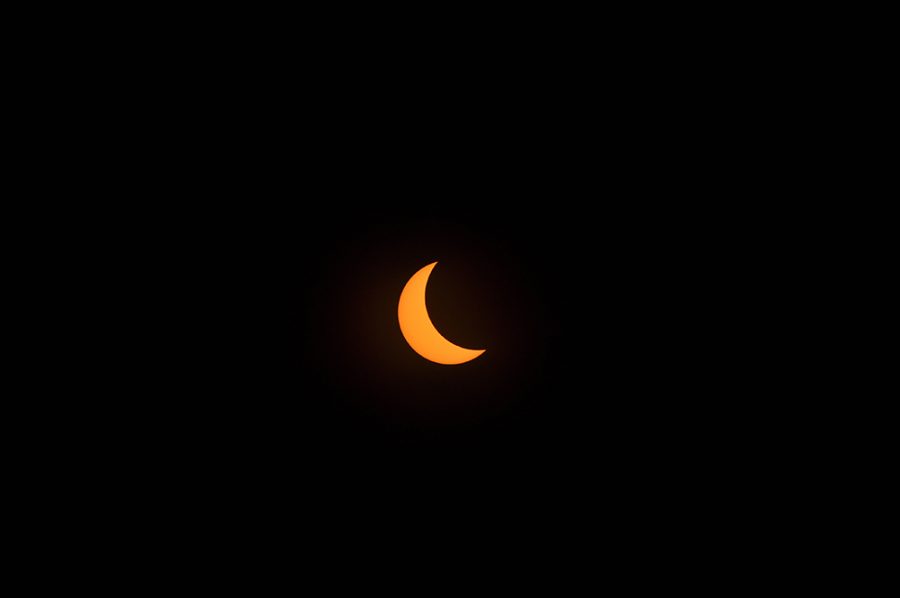It came, got almost dark, and went away
It has been 47 years in the making; the next one will be in 2024
Wayne State College held an eclipse viewing party in the Willow Bowl on the first day of classes.
August 30, 2017
Aug. 21, 2017—the day of a solar eclipse—will be a day to remember for many students and faculty at Wayne State College.
A solar eclipse occurs when the moon passes between the Earth and the Sun. On this day the path cut through the middle of the United States, from Oregon to South Carolina. The main part of the eclipse lasted only two minutes, from 1:21 to 1:23 p.m.
“For me it was more fun when I passed off my glasses to someone who hadn’t seen it yet and watch them go, ‘Oh, my God, this is so awesome,’” said Kelly Dilliard, associate professor, Physical Sciences & Mathematics. “Because it was text book of what I expected. I had never seen one, but it was really fun watching someone else see it. At the end when everyone was gone I could really take it in. I never really got the time to really let it sink in.”
The Willow Bowl was packed for the main part of the eclipse, as a large number of the student body was in attendance. Professors attending the event handed out special glasses for staring directly into the sun, and provided a special telescope that would let spectators see the rings of the sun on the outside of the moon’s shadow.
This was the first time that a viewable solar eclipse has passed through the U.S. since 1970. Solar and lunar eclipses happen across the world at sporadic dates and times. A lunar eclipse occurs when the earth passes directly between the moon and the sun.
The spectacular event brought up feelings of excitement for many.
“The whole thing was just a surreal moment,” said WSC student Andrew Raitt. “I’m not really into those types of things, but I had the opportunity to look at it and watch so I thought, why not take the time to look at something that I wouldn’t ever see again? It was just a pretty cool feeling after I saw it.”
The next solar eclipse in the U.S. will be April 8, 2024.







